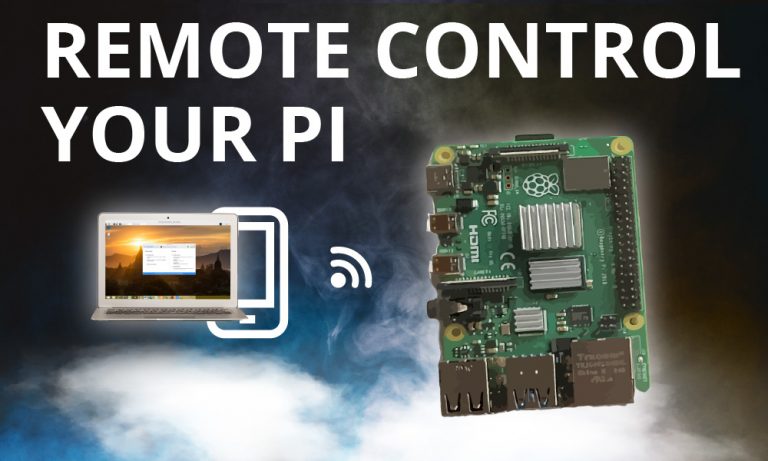How To Manage Raspberry Pi Remotely For Free: A Comprehensive Guide
Introduction
In today's tech-driven world, remote access and management have become essential for maintaining and operating devices efficiently. The Raspberry Pi, a versatile and compact microcomputer, is no exception. Whether you're using it for home automation, server hosting, or educational purposes, being able to manage your Raspberry Pi remotely is a valuable skill. This article will provide you with detailed insights, practical tips, and actionable steps to remotely manage your Raspberry Pi for free, ensuring full functionality and security.
Why Manage Raspberry Pi Remotely?
Remote access to your Raspberry Pi isn't just a convenience; it's a gateway to unparalleled control and flexibility. By managing your Raspberry Pi remotely, you can transform your projects and experiments into truly mobile experiences. Whether you're troubleshooting from another location or simply monitoring your device's status, remote access offers the flexibility to interact with your Raspberry Pi from anywhere in the world.
Best Free Tools for Raspberry Pi Remote Management
With the right free remote management software, you can control your Raspberry Pi from anywhere, ensuring seamless operations. In this guide, we’ll explore the best free tools available and how to set them up.
1. SSH (Secure Shell)
SSH, or Secure Shell, is one of the most popular methods for remote access to Raspberry Pi. It allows you to access the terminal of your Raspberry Pi from a remote PC, Linux, or Mac computer. SSH is secure, efficient, and widely supported, making it an ideal choice for managing your Raspberry Pi remotely.
How to Set Up SSH:
- Ensure SSH is enabled on your Raspberry Pi. You can do this by navigating to the Raspberry Pi Configuration tool or by creating an empty file named "ssh" on the boot partition.
- Find the IP address of your Raspberry Pi. You can use the "ifconfig" or "ip addr" command in the terminal.
- Use an SSH client like PuTTY (Windows) or Terminal (Mac/Linux) to connect to your Raspberry Pi using its IP address.
2. VNC (Virtual Network Computing)
VNC is another powerful tool for remote access to your Raspberry Pi. It allows you to remotely control your Raspberry Pi's desktop environment from another computer, offering a visual interface similar to being physically present.
- Mkvcinemascom 2025
- 2 Guys One Horse
- Bollyflix Ninja
- Yellow Dress Girl Rock Paper Scissors
- Sophie Rain Spider Man
How to Set Up VNC:
- Install the RealVNC server on your Raspberry Pi. This can be done through the Raspberry Pi Configuration tool or by running the command: "sudo apt install realvnc-vnc-server realvnc-vnc-viewer".
- Enable VNC from the Raspberry Pi Configuration tool.
- Use a VNC client on your remote device to connect to your Raspberry Pi using its IP address.
3. TeamViewer
TeamViewer is a versatile remote access solution that works across multiple platforms. While it offers paid features, the free version is sufficient for personal use with Raspberry Pi.
How to Set Up TeamViewer:
- Download and install TeamViewer on your Raspberry Pi. You can find the appropriate package for Raspberry Pi OS on the official TeamViewer website.
- Install TeamViewer on your remote device.
- Connect to your Raspberry Pi by entering the unique ID and password provided during installation.
Advanced Techniques for Remote Access
Beyond the basic methods mentioned above, there are advanced techniques to enhance your remote access experience:
Expose SSH or VNC Over the Internet
For increased flexibility, you can expose SSH or VNC on your Raspberry Pi over the open internet. However, this requires careful consideration of security measures, such as using a strong password and enabling two-factor authentication.
Using a VPN
Connecting your Raspberry Pi to a Virtual Private Network (VPN) adds an extra layer of security when accessing it remotely. A VPN encrypts your connection, ensuring that your data remains private and secure.
External Solutions
External solutions like PiTunnel can simplify the setup process by providing a one-line command to install and configure remote access tools. This makes it easier for beginners to manage their Raspberry Pi remotely without dealing with complex configurations.
Practical Tips for Managing Raspberry Pi Remotely
Here are some practical tips to help you manage your Raspberry Pi remotely more effectively:
- Regularly update your Raspberry Pi OS to ensure you have the latest security patches and features.
- Use strong passwords and enable two-factor authentication whenever possible.
- Monitor your Raspberry Pi's performance and status remotely using tools like remote terminal, status monitoring, and alerts.
- Transfer files securely using SSH or other secure protocols.
Conclusion
With the increasing demand for remote work and flexible project management, learning how to manage your Raspberry Pi remotely for free is a valuable skill. This article has covered everything from setting up SSH, VNC, and TeamViewer to advanced techniques like exposing SSH over the internet and using a VPN. By following the methods and tips outlined here, you'll be fully equipped to manage your Raspberry Pi remotely while maintaining full functionality and security.
In summary, remote access to your Raspberry Pi offers unparalleled control and flexibility, transforming your projects into truly mobile experiences. Whether you're using SSH for terminal access, VNC for desktop control, or TeamViewer for a user-friendly interface, the tools and techniques discussed in this guide will empower you to manage your Raspberry Pi efficiently and securely from anywhere in the world.
- Sophie Rain Spider Man
- Remoteiot Vpc Ssh Raspberry Pi Download
- Conchita Martinez Wife
- Viralkand Desi Mms
- Remoteiot Vpc Network Raspberry Pi Free

Raspberry Pi Remote Device Management Guide - ElectronicsHacks

Control your Raspberry Pi Remotely | PiCockpit

Install Raspberry Pi Connect | Access Raspberry Pi Remotely #